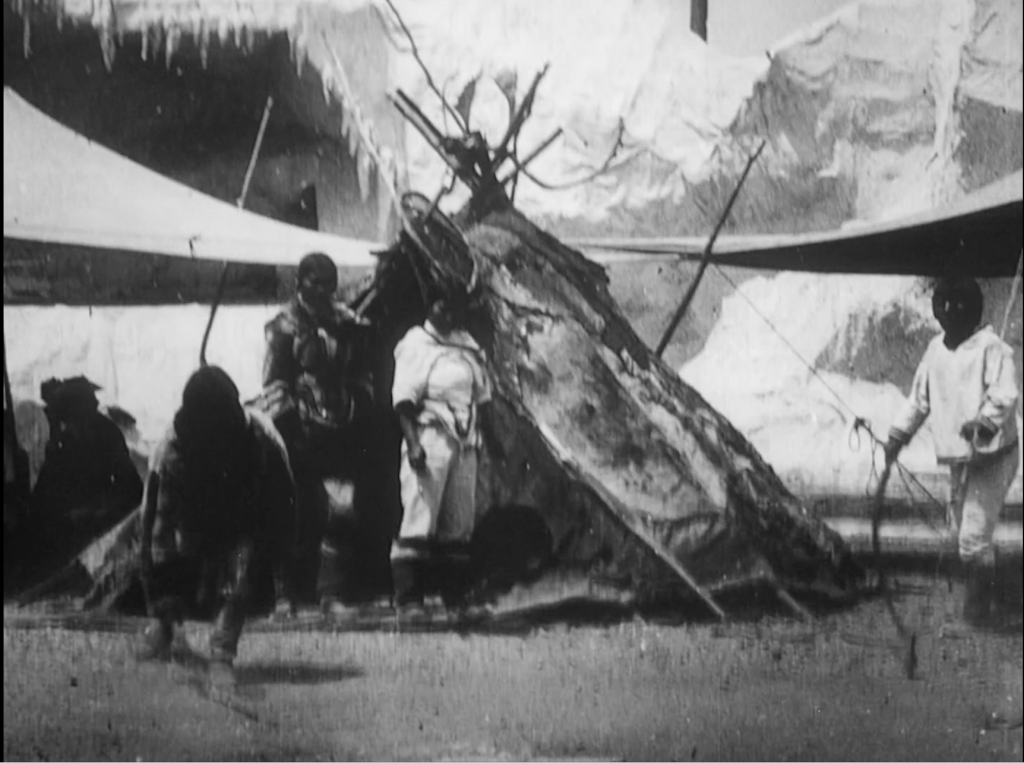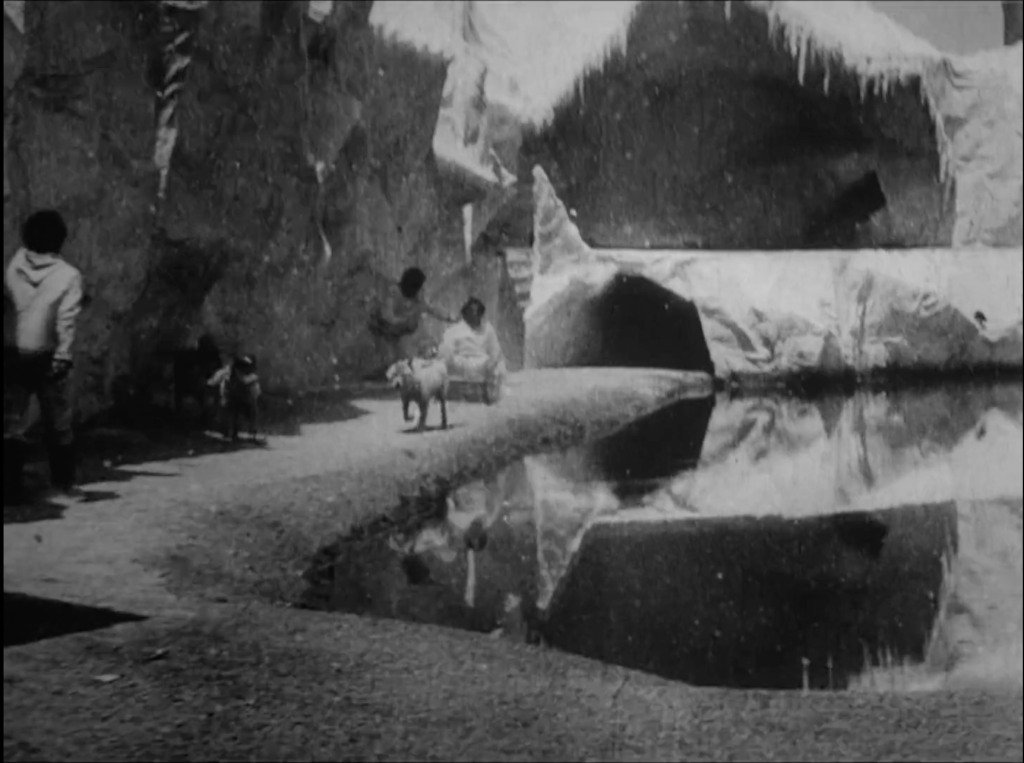This series features films from Labrador Cinema, a book I co-wrote with Morgen Mills for our imprint, Brack and Brine. All films discussed here can be streamed freely from authorized third-party providers. Links included.
In 1892, a group of Inuit from Zoar, Nain, Okak, and Hebron left Labrador to work as ethnographic performers in the United States and Europe. The story of their work in Europe is largely still untold, but Jim Zwick and (soon) Nigel Markham (will) have written about their work in the United States, and Russell Potter and Kenn Harper have written specifically about their work in film.
In the late 19th and early 20th centuries, ethnographic performances took many forms, including human zoos and wild west shows. In the US, the largest venues were world’s fairs, events which also showcased things like Thomas Edison’s motion picture technology. At the 1901 Pan-American Exposition in Buffalo, New York, the “Cinematograph” stall (squares A-2 and A-3 on this map) was a short distance from the “Esquimaux Village” (squares C-2 and D-2). Edwin S. Porter didn’t have to travel very far to find compelling subjects in people like Esther Eneutseak, Simon Aputik, and Zacharias Zad.
Three of Porter’s films of Labrador Inuit still survive, and all three stream on the Library of Congress’s website: Esquimaux Game of Snap-the-Whip, Esquimaux Village, and Esquimaux Leap-Frog. As the oldest surviving films of Labrador Inuit (and likely any Inuit), these are important records of what, how, and where Inuit were performing 123 years ago.
The films are worth repeated viewings. At first blush, the action seems stagey and repetitive. But a closer look at the set is well rewarded. In Esquimaux Village, the snow appears to be made of finely crushed rock, while the jagged construction of the ice cave in the background seems more like an avant-garde theatre set than any real feature we might see on ice or land. In Esquimaux Leap-Frog, we can clearly see electrical wires and smokestacks in the background, part of the generating station behind the Esquimaux Village on the Exposition grounds. These spaces were not meant to be accurate recreations of Northern spaces. Rather, they were designed to show audiences that the creators had the technological skill to simulate a Northern setting—more Disneyland than documentary. To get a full sense of the context, it’s worth watching A Trip around the Pan-American Exposition, a film shot in a gondola travelling through the exposition’s canals.
These three films are all that survive of possibly up to eight films that documented Labrador Inuit at the 1901 Pan-American Exposition in Buffalo. They mark the beginning of a brief but intense period of film work for the group that ended with The Way of the Eskimo (1911), a lost film produced by the Selig Polyscope Company and written by Esther Eneutseak’s daughter, Nancy Columbia.


